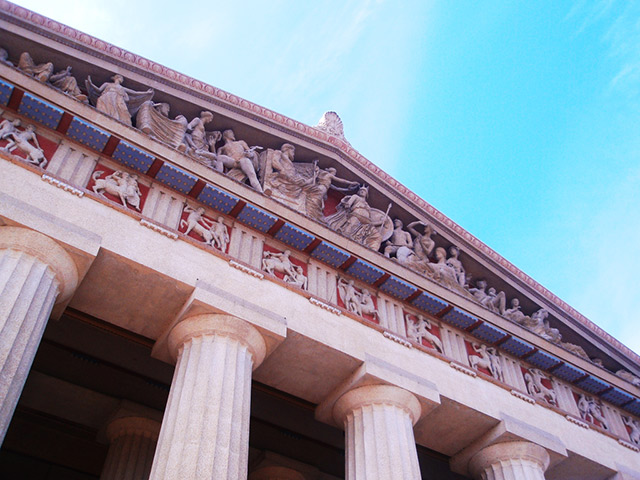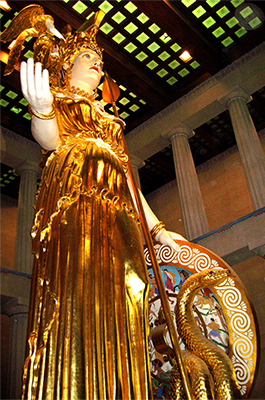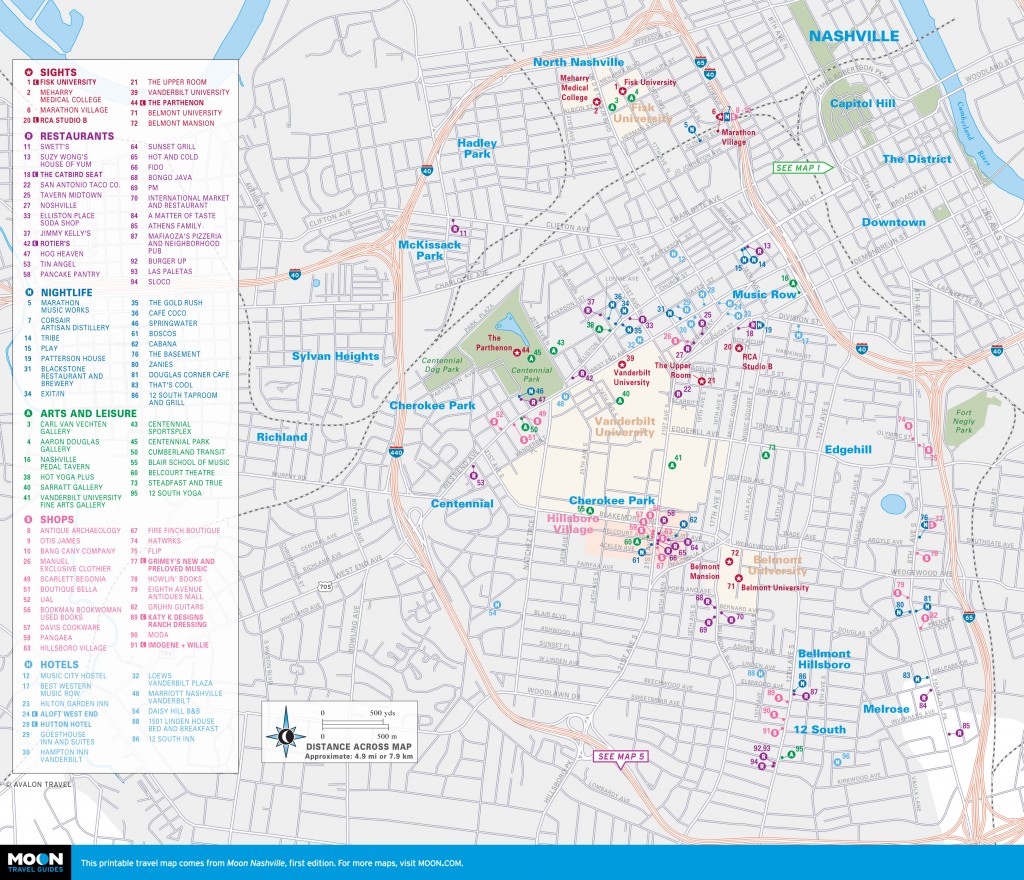
The east pediment of the Parthenon in Nashville’s Centennial Park. Photo © Joel Kramer, licensed Creative Commons Attribution.
In 1893, funds began to be raised for a mighty exposition that would celebrate the 1896 centennial of the state of Tennessee. Though the exposition would start a year late, in 1897, it would exceed all expectations. The old West Side Race Track was converted to a little city with exhibit halls dedicated to transportation, agriculture, machinery, minerals, forestry, and African Americans, among other themes. There were Chinese, Cuban, and Egyptian villages; a midway; and an auditorium. The exposition attracted 1.7 million people between May 1 and October 31. Today the Parthenon remains one of Nashville’s most iconic landmarks.When the exposition closed in the fall of 1897, all the exhibit halls were torn down except for a life-size replica of the Greek Parthenon, which had housed an art exhibit during the centennial. The exposition grounds were made into a public park, aptly named Centennial Park (2600 West End Ave., 615/862-8431, June-Aug. Sun. 12:30pm-4:30pm, Sept.-May Tues.-Sat. 9am-4:30pm, 6 adults, $4 seniors and children), and Nashvillians continued to admire their Parthenon.
A gilded statue of Athena stands watch inside the Parthenon. Photo © Stephanie Richard, licensed Creative Commons Attribution.
The Parthenon replica had been built out of wood and plaster, and it was designed only to last through the centennial. Remarkably, it survived well beyond that. But by the 1920s, the Parthenon was crumbling. City officials, responding to public outcry to save the Parthenon, agreed to restore it, and they hired a contractor to rebuild the replica. The contractor did so using tinted concrete. Today the Parthenon remains one of Nashville’s most iconic landmarks. It is a monument to the creativity and energy of the New South, and also to Nashville’s distinction as the Athens of the South. You can see and walk around the Parthenon simply by visiting Centennial Park. It is, in many respects, most beautiful from the outside, particularly when lit dramatically at night.As breathtaking as it is from the exterior, it is worth paying to go inside the Parthenon. The landmark has three gallery spaces; the largest is used to display works from its permanent collection of 63 pieces of American art. The other two galleries host interesting changing exhibits. But upstairs is the remarkable 42-foot statue of Athena, by local sculptor Alan LeQuire. Athena is designed as a replica of what the statue would have looked like in ancient Greece, in all her golden glory. In ancient Greece the doors of the Parthenon would have been open, and she would have been seen from a distance. In Nashville her scale and gilded loins are front and center.

Midtown Nashville
Excerpted from the First Edition of Moon Nashville.